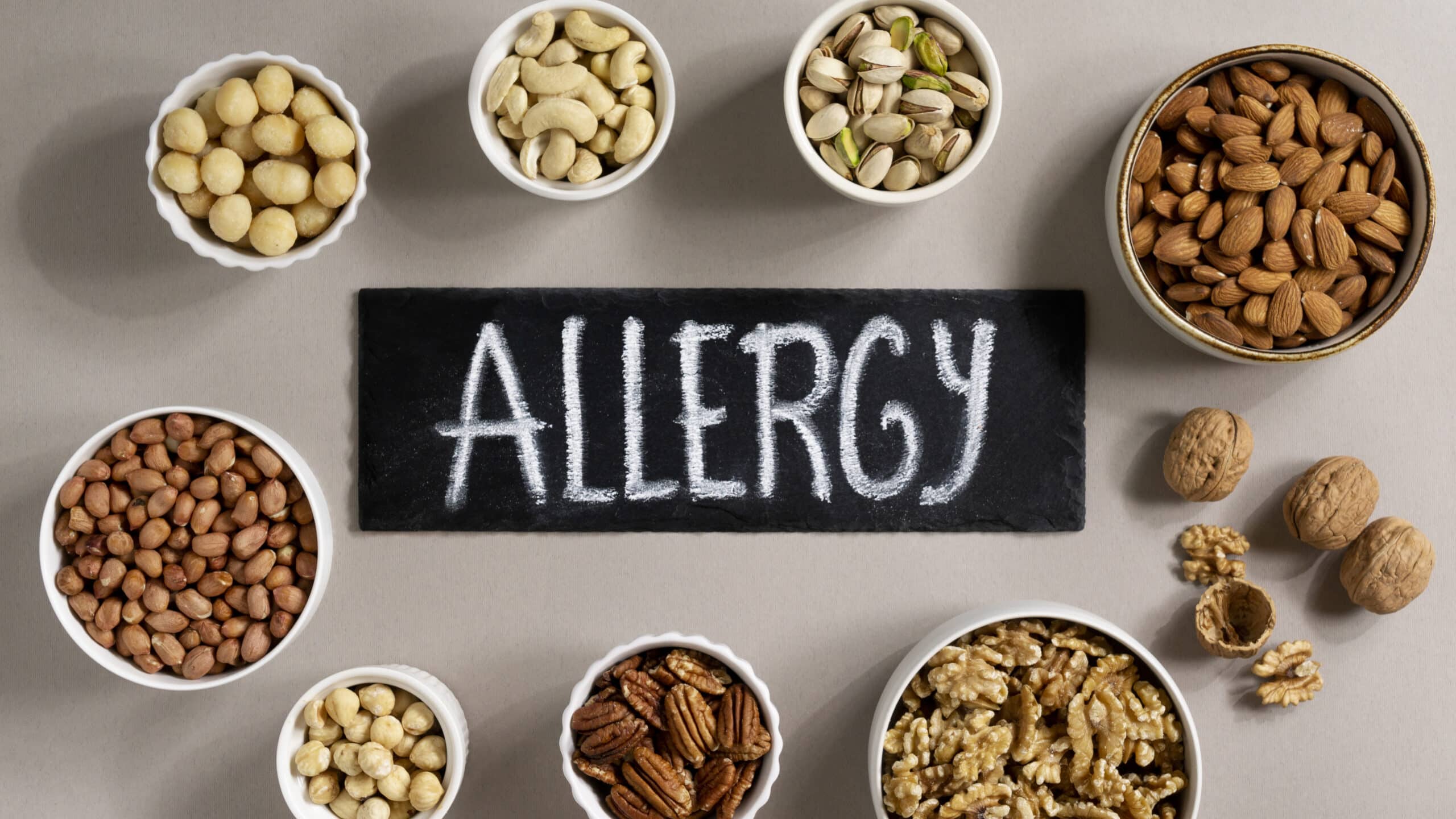Key Takeaways
-
Recognize the symptoms of allspice allergy, such as hives, itching, or difficulty breathing, and seek medical attention if experiencing a reaction.
-
Understand the potential for cross-reactivity with other spices and related food intolerances and herbs, and consider comprehensive allergy testing.
-
Manage allspice allergy by avoiding its consumption and carefully reading food labels to identify potential sources of allspice.
-
Take special precautions when dining out or consuming pre-packaged foods to prevent accidental exposure to allspice.
-
Seek support from allergists, reliable information, and online resources to effectively navigate and cope with allspice allergy and food intolerance in daily life.
Allergies to common spices can be surprising and challenging. One such lesser-known allergen is allspice, which can cause adverse reactions in sensitive individuals. Understanding the symptoms, triggers, and management of an allspice allergy is crucial for those affected. If you or someone you know has experienced adverse reactions after consuming allspice, stay tuned for valuable insights on navigating and mitigating the effects of an allspice allergy.
Recognizing Symptoms and Reactions to Allspice
Common Symptoms
If you have an allspice allergy, you might experience itching and hives. These are typical signs of a food allergy to this spice. It’s essential to pay attention to any skin-related symptoms after consuming or coming into contact with allspice.
Allergic reactions can manifest as digestive issues, such as nausea and vomiting. If you notice these symptoms after ingesting a dish containing allspice, it could indicate an allergy.
Severe Allergic Response
In some cases, a severe allergic response may occur, leading to swelling of the face, throat, or tongue. This type of reaction, such as spice allergy, requires immediate medical attention as it could be life-threatening. Swelling in these areas can restrict breathing or lead to anaphylaxis, a severe whole-body allergic reaction.
It’s important for individuals who suspect they may have an allspice allergy to undergo proper testing by a healthcare professional. This may involve prick testing or other methods to confirm whether the body reacts negatively when exposed to allspice.
The First Documented Case of Allspice Allergy

Historical Significance
The first documented case of allspice allergy dates back to 1974, when a 35-year-old woman suffered anaphylaxis after consuming allspice. This groundbreaking incident shed light on the potential allergenicity of this commonly used spice.
This pivotal event marked a significant milestone in our understanding of spice allergies, prompting further research into the allergenic properties of allspice and its potential impact on individuals with sensitivities. It also raised awareness among medical professionals about recognizing and addressing allergies related to various spices, including allspice.
Implications for Allergy Awareness
The case serves as a crucial reminder that while allspice is widely utilized in culinary practices, it can pose serious health risks for individuals with specific sensitivities. This revelation has prompted heightened vigilance within the medical community regarding identifying and managing allergic reactions associated with this particular spice.
Moreover, this historical account underscores the importance of educating individuals about the potential risks of certain spices, particularly those susceptible to allergic responses. By raising awareness about allergies linked to allspice consumption, healthcare providers can empower patients to make informed choices and take necessary precautions when incorporating this spice into their diets.
Key Allergens Identified in Allspice
Eugenol and Isoeugenol
Eugenol and isoeugenol are key allergens found in allspice. These compounds are responsible for triggering allergic reactions in individuals who are sensitive to them. When someone with an allergy to eugenol or isoeugenol comes into contact with allspice, they may experience skin rashes, itching, swelling, or even respiratory issues.
Allergies happen when the body thinks something harmless is bad. Allspice can cause this in some people because of eugenol and isoeugenol. People with allergies should be careful with allspice to stay safe.
Understanding for Management
Understanding the presence of eugenol and isoeugenol in allspice is crucial for managing allspice allergy effectively. By being aware of these key allergens, individuals can make informed decisions about their diet and lifestyle. For example, they may need to carefully read food labels to avoid products containing allspice or its derivatives if they have a known sensitivity to eugenol or isoeugenol.
Moreover, knowledge about these allergens empowers individuals to communicate effectively with healthcare providers regarding their allergies. This understanding allows medical professionals to provide appropriate guidance on managing an allergy related to these specific compounds found within the myrtaceae family.
Cross-reactivity and Related Food Intolerances
Allspice Cross-Reactivity
Allspice, a common ingredient in various dishes, may cross-react with substances like mugwort or birch pollen. This means that individuals allergic to these pollens may also experience intolerance to allspice. When someone has a certain pollen allergy, they might be more prone to developing an adverse reaction to allspice due to the similarity between the proteins found in these ingredients.
Cross-reactivity can lead to heightened allergic responses when consuming allspice, causing symptoms such as oral itching, swelling of the lips or tongue, hives, digestive issues, or even anaphylaxis in severe cases.
Related Food Intolerances
Some people allergic to certain pollens may also have trouble with similar foods. For example, if someone is allergic to clove, they might also react to allspice. And if someone is allergic to foods with allspice, like ketchup, they might have a bad reaction when they eat those foods.
It’s essential for individuals experiencing any form of food intolerance or allergy related to allspice to avoid direct consumption, carefully check labels, and inquire about ingredients when dining out.
Severe Allergic Reactions and Anaphylaxis Risk

Anaphylactic Reactions
Allspice allergy can result in severe allergic reactions, including anaphylaxis, which is a life-threatening condition. When someone with an allspice allergy eats it, their body can react badly. They might have trouble breathing, their throat might swell, their blood pressure might drop fast, and they could even pass out. These symptoms can get worse fast, and need a doctor right away.
An incident involving allspice exposure can trigger a cascade of events within the body that affect multiple systems simultaneously. The potential severity of these reactions makes it crucial for individuals with this allergy to avoid allspice-containing products and seek prompt medical care if accidental exposure occurs.
Importance of Immediate Medical Attention
If you’re allergic to allspice, it’s important to know the signs of an allergic reaction and have emergency medication like epinephrine. Giving epinephrine right away when you notice the symptoms can help make the reaction less severe until you can get help from a doctor.
In cases where an individual experiences symptoms indicative of anaphylaxis following allspice consumption or contact, seeking immediate emergency treatment at a hospital is imperative. Prompt intervention by healthcare providers is crucial due to the potential for complications such as respiratory failure or cardiovascular issues associated with severe allergic reactions.
Importance of Testing for Allspice Allergy
Diagnosis Methods
Testing for allspice allergy typically involves two main methods: skin prick tests and blood tests. During a skin prick test, a small amount of allspice extract is placed on the skin, and then a tiny needle pricks the skin to see if there’s an allergic reaction. On the other hand, blood tests measure the presence of antibodies that your immune system produces in response to allspice allergens.
Identifying whether someone has an allspice allergy is crucial for effective management. Accurate diagnosis allows individuals to take necessary precautions when consuming food or using products containing allspice. It also helps healthcare providers create personalized management plans tailored to each individual’s needs.
Personalized Management Plan
Once diagnosed with an allspice allergy, avoiding foods and products containing this spice becomes essential. For instance, individuals may need to scrutinize ingredient labels on packaged foods or inquire about ingredients used in restaurant dishes. They might need to inform family members, friends, and colleagues about their allergies to prevent accidental exposure.
Moreover, having a clear understanding of one’s allergies can aid in creating emergency action plans in case of severe allergic reactions or anaphylaxis risk due to allspice exposure. This could involve carrying epinephrine auto-injectors at all times and knowing how and when to use them in an emergency.
Managing Allspice Allergy in Diet and Lifestyle
Reading Food Labels
When dealing with an allspice allergy, reading food labels meticulously is crucial. Many processed and pre-packaged foods may contain allspice as a flavoring agent, so checking ingredients is essential. Look out for terms like “allspice,” “Jamaican pepper,” or “pimento” on the label. Be cautious of generic terms like “spices” or “natural flavors,” which could potentially include allspice.
Individuals with an allergy should consider substituting it with other herbs and spices that provide similar flavor profiles without triggering allergic reactions to avoid hidden sources of allspice.
Substituting with Alternative Spices
Various alternatives to allspice can be used in cooking and baking. For example, cinnamon, nutmeg, cloves, and ginger offer comparable warm and aromatic flavors often associated with allspice. These substitutes add depth to dishes and allow individuals to enjoy flavorful meals without compromising their dietary restrictions due to an allergy.
Educating family members, friends, and caregivers about the individual’s allergies is paramount in preventing accidental exposure. The risk of inadvertent consumption can be significantly minimized by raising awareness about the severity of the condition and providing clear instructions on ingredient avoidance when preparing meals at home or dining out.
Special Precautions for Allspice Consumption
Dining Out
Informing restaurants and food establishments about an allspice allergy is crucial to avoid accidental exposure. When dining out, it’s essential to communicate the allergy to the staff, including chefs and servers. This ensures that they can take necessary precautions when preparing your meal.
Cross-contamination risks are prevalent in restaurant kitchens. Utensils, cooking surfaces, or even shared ingredients may contain traces of allspice. It’s important to inquire about the preparation methods and emphasize the severity of the allergy.
Carrying a personalized chef card that outlines the allergy specifics can be helpful when dining out. This card provides detailed information about the allergen and any specific instructions for meal preparation.
Meal Preparation at Home
When preparing meals at home, individuals with an allspice allergy should also be mindful of cross-contamination. Using separate cutting boards, utensils, and cookware for allspice-free dishes can help minimize the risk.
It’s advisable to carefully read food labels and be aware of common alternative names for allspice in ingredient lists. Some examples include “Jamaican pepper” or “pimento.” Being vigilant about these aliases is essential in preventing accidental ingestion.
Emergency Preparedness
For those with severe allergies, carrying an epinephrine auto-injector at all times is non-negotiable. In case of accidental consumption leading to an allergic reaction (anaphylaxis), prompt administration of epinephrine can be life-saving.
Resources and Support for Individuals with Allspice Allergy
Support Groups
Joining support groups can provide valuable insights and emotional support for people dealing with an allspice allergy. Interacting with others with similar experiences can offer a sense of community and understanding. These groups often share tips on managing the allergy, including information about alternative spices, recipes, and coping strategies.
Support group members may also discuss their encounters with different products or restaurants, helping individuals avoid potential allergens. These communities serve as safe spaces to express concerns and seek advice from those facing comparable challenges.
Guidance from Allergists
It’s important to ask allergists for help with allspice allergies. They know a lot about allergies and can advise you on managing them. They can also do tests to check if you’re allergic, teach you how to read food labels, and give tips to prevent allergic reactions.
Allergists may also suggest preventive measures when dining out or cooking at home. Moreover, they are pivotal in developing individualized emergency plans that outline necessary steps if accidental exposure occurs.
Online Resources
Online resources offer extensive information on recipes and products suitable for those with an allspice allergy. Websites dedicated to food allergies often feature recipe sections designed to accommodate various dietary restrictions, including allspice allergies. Furthermore, numerous online platforms curate lists of allspice-free products available in the market.
These resources enable individuals to explore diverse culinary options while ensuring their safety by avoiding allspice-containing items.
Closing Thoughts
It’s important to know about allspice allergies to stay safe. Understanding the symptoms and causes and making smart food choices is key. The first case of a bad reaction to allspice shows how serious it can be. People, doctors, and food companies need to test for allergies, be aware of other things that can cause a reaction, and take steps to be safe. By being informed and careful, people with allspice allergy can manage it and lower the risk of bad reactions.
For those affected by allspice allergy, seeking support from allergists and connecting with communities of individuals facing similar challenges can provide valuable insights and emotional support. Advocating for clearer labeling of allspice in food products can contribute to greater awareness and safety for those with this allergy.
Frequently Asked Questions
What are the common symptoms of allspice allergy?
Common symptoms of allspice allergy include hives, itching, swelling, nausea, vomiting, diarrhea, and, in severe cases, anaphylaxis. It can also cause respiratory symptoms such as wheezing or difficulty breathing.
How is allspice allergy diagnosed?
Allspice allergy can be diagnosed through skin prick or blood tests to check for specific IgE antibodies. An oral food challenge may also be conducted under medical supervision to confirm the diagnosis.
Can individuals with allspice allergy consume other spices?
Individuals with allspice allergy should exercise caution when consuming other spices due to potential cross-reactivity. Consulting an allergist or healthcare professional is recommended before introducing new spices into their diet.
Are there any alternative ingredients for individuals with allspice allergies?
Individuals with allspice allergies can use alternative spices like cinnamon, nutmeg, cloves, ginger, or mace in their cooking and baking. It’s important to carefully read ingredient labels and consider using single-ingredient spices to avoid potential allergens.
What emergency measures should be taken for a severe allergic reaction to allspice?
In case of a severe allergic reaction to allspice (anaphylaxis), administer epinephrine immediately if available and seek emergency medical attention. Individuals at risk of anaphylaxis should carry an epinephrine auto-injector at all times and know how to use it effectively.

